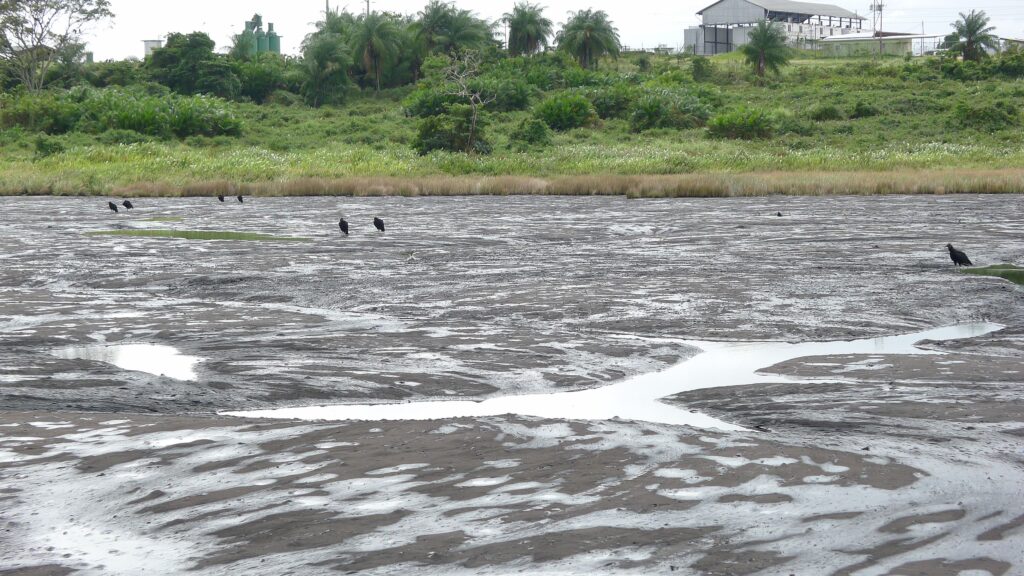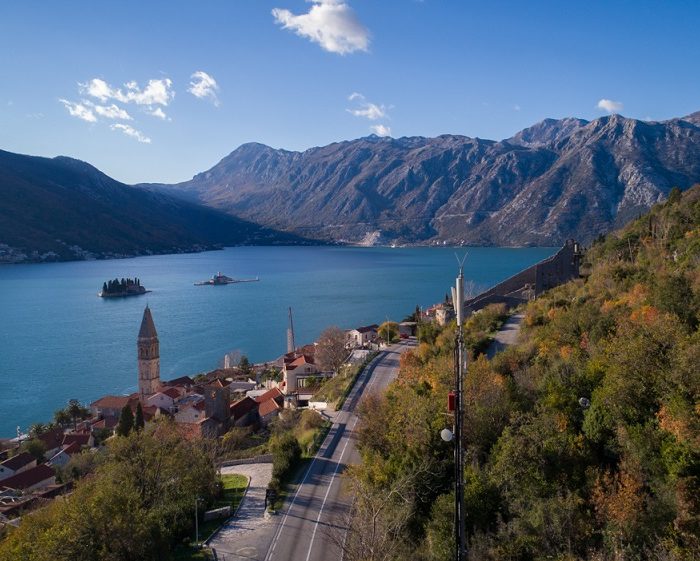Quick facts about Trinidad and Tobago:
- Population: Approximately 1.5 million people.
- Capital: Port of Spain.
- Official Language: English.
- Currency: Trinidad and Tobago dollar (TTD).
- Government: Parliamentary democracy.
- Major Religion: Christianity.
- Geography: Located in the southern Caribbean, Trinidad and Tobago is an island nation with a total area of about 5,130 square kilometers.
Fact 1: There is a lake in Trinidad and Tobago that is the largest natural deposit of asphalt
Trinidad and Tobago is home to the extraordinary La Brea Pitch Lake, the largest natural deposit of asphalt globally, spanning over 100 acres. This unique lake formed thousands of years ago as a result of seismic activity that caused oil to rise to the surface and mix with water, creating a thick layer of natural asphalt. The asphalt’s consistency is often likened to molasses, and it’s estimated to contain around 10 million tons of asphalt. The site is not only a geological marvel but also an important research area, attracting scientists and geologists worldwide. Visitors can explore the lake’s surroundings, take guided tours, and even swim in the warm, viscous asphalt.

Fact 2: Trinidad and Tobago is a great place for bird watching
Trinidad and Tobago boasts a diverse array of bird species, making it a paradise for birdwatchers. With over 460 species recorded, including exotic tropical birds like the Scarlet Ibis and the Blue-throated Goldentail, the islands offer unparalleled opportunities for birdwatching. The diverse habitats, ranging from lush rainforests to coastal mangroves, provide habitats for a wide variety of avian life. Birdwatchers can explore numerous well-maintained trails, guided tours, and birding hotspots across the islands, making Trinidad and Tobago a must-visit destination for anyone passionate about ornithology.
Fact 3: There is a major jazz festival in the country
Each year, Trinidad and Tobago welcomes music lovers from around the globe to its acclaimed jazz festival. This vibrant event celebrates the rich cultural heritage of the islands through a fusion of local and international jazz performances. Held in various venues across the country, the festival showcases talented musicians, both established and emerging, and offers a diverse lineup of concerts, workshops, and jam sessions. From soulful Caribbean rhythms to innovative jazz interpretations, the festival promises an unforgettable experience for music enthusiasts of all ages.

Fact 4: Trinidad and Tobago has one of the largest gas deposits in the world
Situated off the northeastern coast of South America, Trinidad and Tobago boasts abundant natural gas reserves, ranking among the largest globally. The country’s energy sector plays a pivotal role in its economy, with natural gas extraction and exportation serving as significant contributors to its GDP. These vast reserves have attracted considerable investment from international energy companies and have positioned Trinidad and Tobago as a key player in the global energy market.
Fact 5: Trinidad and Tobago’s forest reserve is designated as a UNESCO World Heritage Site
This designation highlights the exceptional biodiversity and ecological significance of the region’s forests, which encompass a diverse range of ecosystems, from lush rainforests to pristine mangrove swamps. The reserve is not only a sanctuary for numerous rare and endemic plant and animal species but also plays a crucial role in maintaining ecological balance and providing vital ecosystem services. Visitors to the UNESCO-listed forest reserve can immerse themselves in the natural wonders of the islands, embarking on guided hikes, birdwatching expeditions, and eco-tours to discover the beauty and importance of this protected area.

Fact 6: The hottest peppers grow in Trinidad and Tobago
Trinidad and Tobago is renowned for its spicy peppers cultivated in the region. Among them are well-known varieties like the Trinidad Moruga Scorpion and the Trinidad Scorpion Butch T. These peppers often top the Scoville scale, and their fiery flavor adds a unique zest to local cuisine. Pepper cultivation is a significant part of Trinidad and Tobago’s agriculture, drawing attention from both locals and tourists eager to experience the culinary challenges of this island nation.
Fact 7: The largest brain coral is off the coast of Trinidad and Tobago
Off the shores of Trinidad and Tobago lies an enormous brain coral, known as the “Brain Coral of Tobago” or “Brain Coral of Freedom”, which stands as the largest of its kind known to date. This majestic coral stretches across a significant area near the coast of Tobago, serving as a habitat for a multitude of marine species. Its impressive size and diverse marine life attract divers and underwater enthusiasts from around the world. The variety of coral reefs along the coast of Trinidad and Tobago makes it a dream destination for anyone looking to immerse themselves in the breathtaking world of underwater nature.

Fact 8: Trinidad has many Indian descendants and hosts Hindu festivals
With a rich cultural tapestry, Trinidad is home to a significant population of Indian descendants, tracing back to the indentured laborers who arrived in the 19th and early 20th centuries. This cultural heritage is celebrated through various Hindu festivals observed throughout the year. Festivals like Diwali, the Festival of Lights, and Phagwah, the Hindu festival of colors, are widely celebrated across the island, offering a glimpse into Trinidad’s diverse cultural landscape. These festivals feature vibrant processions, traditional rituals, and elaborate feasts.
Fact 9: Trinidad and Tobago is home to many stunning beaches
With its picturesque coastline and crystal-clear waters, Trinidad and Tobago boasts an abundance of breathtaking beaches. From the pristine white sands of Pigeon Point Beach in Tobago to the secluded coves of Maracas Bay in Trinidad, there is a beach to suit every taste. Whether you’re seeking serene relaxation or thrilling water sports, the beaches of Trinidad and Tobago offer something for everyone. Visitors can enjoy snorkeling among vibrant coral reefs, sunbathing on palm-fringed shores, or exploring hidden bays accessible only by boat. With its natural beauty and tranquil ambiance.
Note: If you plan to visit the country, check if you need an International Driver’s License in Trinidad and Tobago to drive.

Fact 10: The first black Miss Universe from Trinidad and Tobago.
Janelle Penny Commissiong, hailing from Trinidad and Tobago, shattered barriers and captivated the world when she became the first black Miss Universe in 1977. Her victory marked a significant milestone in beauty pageant history, representing a triumph of diversity and breaking stereotypes in the process. Commissiong’s grace, intelligence, and beauty garnered international acclaim, inspiring generations of women of color to pursue their dreams and embrace their unique identities.

Published April 06, 2024 • 6m to read





